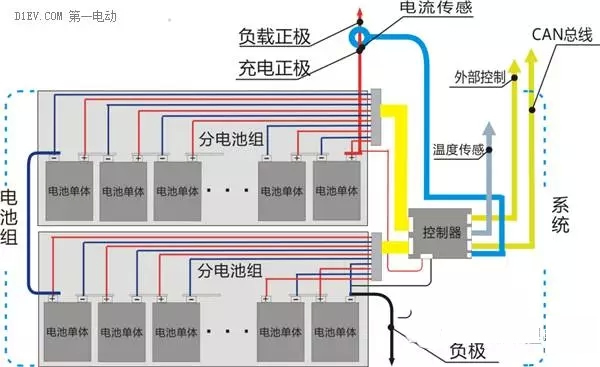


Overseas sale:Annie Yi
Mobile:0086 18998935574
E-mail:sales7@szjlgw.com
WhatApp: 0086 18998935574
Tel:0755-33160538
Fax:0755-29644707
Add:Building 1st,.Quanyuanfa Industrial Park,Zhucun,Guanlan Street,Bao'an District, Shenzhen
Borrowing the term in the economic sector, the electric car BMS products are currently in a "stagflation" state. Although the product features continue to improve, the market continues to expand, but the product of the key technical level is still stagnant, the original pain point still exists. One of the main reasons for this situation is that our product design, are selected by foreign semiconductor IC manufacturers to provide battery management IC, and its application as a reference for the design. BMS products can be divided into software algorithms and hardware architecture of two relatively independent part, because the software algorithm is more professional and profound, and the hardware part is not related, this article only for the hardware architecture and product performance link between this part of the content Analysis and discussion.
Start with the battery management chip. The emergence and development of battery management IC is related to the problems encountered in the application of lithium batteries. The first is to solve the lithium battery overcharge and over the design of a single battery charge and discharge protection chip, and later in the lithium battery multi-section series applications have developed in the multi-string of chips, this time to become a battery management Chip, mainly on the battery pack in each section of the battery voltage data collection. And then in order to deal with the battery is not consistent with the problem, and further integrated power switch drive function, which is equipped with a balanced function of the battery management IC.
Objectively speaking, the battery management dedicated IC achievements of the early BMS industry, also led the development of BMS products. It is because of the special chip, BMS design can greatly simplify the product of the miniaturization and reliability have been greatly improved, but at the same time, we have to see the limitations of special chips. As mentioned earlier, the battery management chip is also developed with the application of lithium batteries, and early lithium batteries for small electronic devices, and later in the notebook computer is widely used, so the battery management chip has always been for the low string Number, small equipment services. When the lithium battery pack applied to the electric car, the situation began to change. Electric car lithium battery pack is a high string number, large capacity battery in series, easily dozens of strings or even hundreds of string of the number of notebook computers is not a few strings of this single-digit level can be used in series. Dedicated ICs are not idle and quickly introduce more string applications, but taking into account the voltage and application complexity are generally not more than 20 strings. The typical architecture of BMSs that use these IC designs is a centralized architecture. BMS and the battery pack only between the connection, the number of connections depends on the number of battery strings, BMS circuit board on the battery management chip number also depends on the number of battery strings.

As can be seen from the schematic diagram, the advantages of centralized BMS products is simple structure, low cost. When the battery string is low, such as 10 to string, the connection is still not complicated, and the battery capacity is small, BMS installation location can be close to the entire battery pack, shorten the connection distance, battery pack - --- BMS, the entire energy system is more compact, in electric bicycles and electric motorcycles more suitable. But in the electric car lithium battery on the application, because the need for battery capacity, group physical size is relatively large, the connection will be longer, and the length of different, coupled with a large number of strings, the number of connections will be a lot, Dozens of even hundreds of lines of the arrangement is very troublesome. There is also an important detail is that the order of these connections is required to be fixed, because the dedicated chip pin has been defined in advance of the battery series order, so each string of battery connection to access the BMS specified connector pin The Although there is no difficulty in BMS design work, but in the BMS and the actual connection with the battery pack is a big trouble. The general line is one end and the battery connected together, the other end through the plug-in access to BMS, and the battery connection These are now done manually, the future is also difficult to complete by the machine, connected to each string of battery electrodes Can not make any mistakes, the size of the workload can be imagined. Through the analysis of centralized architecture, we see that the dedicated IC is more suitable for small capacity, low string number of occasions, in large capacity, high string number of occasions will have a complex connection, the need for one-to-one shortcomings.
Look at the balance of the problem, centralized architecture is more suitable for the completion of passive equilibrium, circuit design does not increase the complexity of the current mainstream IC also have this feature. But the current capacity is limited, 100 mA level, in the initial use of the battery pack is not very different in the case of the problem is not big, in the latter part of the consistency of the larger differences will have the risk of uneven adjustment of the battery The If you want to join the active balance function, the existing architecture is basically no help, the need for additional wiring harness and switch matrix, the rapid increase in the complexity of the circuit. The switch matrix requires a lot of electronic switches, MOSFETs, but because of the large number of control circuits that are quite complex, there are enterprise relays instead of simplifying the design, but bring the relay as a mechanical switch for life problems and malfunctions. Of course, you can also reduce the relay switching frequency to extend its life, through the error check to avoid the risk, but this is always unable to ensure that the device's average trouble-free working hours, not to mention the number of relays is quite a lot, more than one. This is a compromise that is a last resort, rather than a positive solution to the active equilibrium switch matrix problem.
In order to solve the complex problems of connection, there has been a distributed architecture BMS. This system is divided into CSC (single management unit), BMU (battery management controller), CSC installed in a single string of batteries, responsible for the string of battery information collection And pass, each string of battery information through the bus into the BMU. This architecture through the bus to solve the complex wiring harness problems, and the installation is relatively simple, high efficiency, good flexibility, suitable for different battery size. Distributed BMS can not use the battery management dedicated IC, is to abandon the dedicated IC for innovative design of a relatively successful idea. In short, the distributed architecture does not solve the one-to-one relationship and the problem of active equilibrium. The CSC also needs to set the address (although it can be set up after installation, it is easier to implement than the centralized architecture before installation, Small), active equalization still requires additional wiring harness and switch matrix. And because each CSC requires MCU and with a separate communication bus, the price is higher than the centralized architecture BMS, especially in the low string number advantage. Distributed ideas to a centralized one of the good tips, which is through the bus to solve the problem of wiring harness, dedicated IC also saw the benefits of which quickly introduced with no isolation of the communication bus, and further improve their own. Semi-distributed architecture, in fact, is a secondary centralized architecture has become one of the mainstream BMS design. This is the whole battery pack is divided into several modules, each module uses a dedicated chip designed into a small BMS, and then through the bus to connect to a final controller. The semi-distributed architecture focuses on the advantages of distributed harnesses and the simplicity of centralized design, but unfortunately the previous architectures failed to solve the problems that followed the inheritance, the one-to-one relationship and the active equilibrium exist.
Tracing the source, one-to-one relationship and active balance in the switch matrix of the problems are from the battery management dedicated chip confined limitations, although the battery management chip is also evolving. Because it is a multi-string application, in the dedicated IC, each battery detection channel must be identified in advance number, after that the order of each channel can not imagine, at present to see any IC can not design such a function. Similarly, the switch matrix is derived from multi-string applications, and because it involves the power part, which is the natural weakness of the IC, the existing architecture of the reasons for the active balance is powerless. Therefore, if it is a low string number, no active balance function of the application, the use of dedicated IC program is feasible, such as power tools, electric bicycles and electric motorcycles; in the use of electric vehicle level, in particular, to complete the active balance function, Using a dedicated IC to design BMS is still more difficult.
Shenzhen Jinlong grid Wang Electronics Co., Ltd., professional research and development, production and sale of battery protection board, lithium battery protection board, power battery protection board, you are welcome to inquire and purchase!